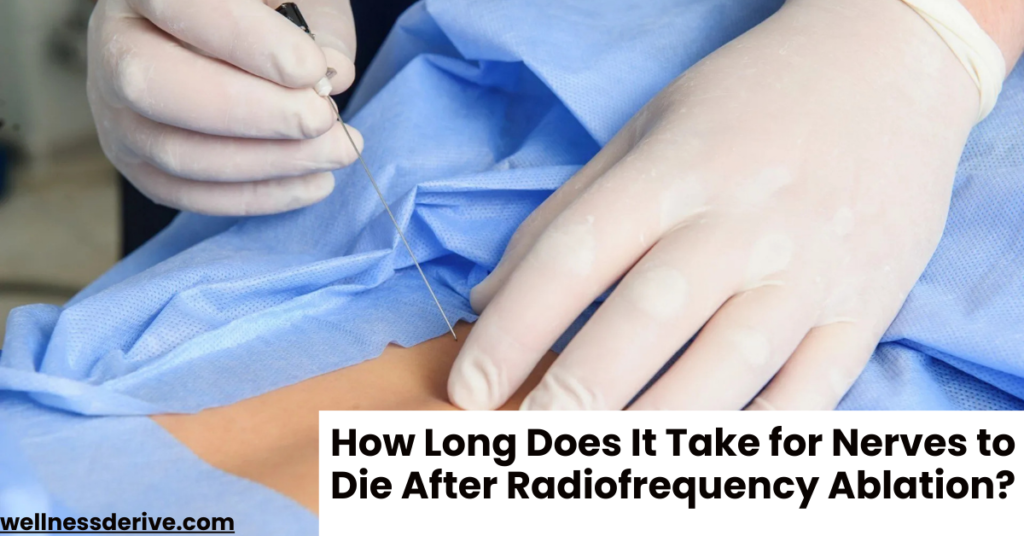Radiofrequency ablation (RFA) is a minimally invasive procedure designed to alleviate chronic pain by disrupting the function of targeted nerves. The process involves using heat generated by radiofrequency energy to damage nerve tissues, stopping them from transmitting pain signals. Typically, it takes 7 to 10 days for the nerves to die and for patients to experience the full effects of the procedure.
How Does Radiofrequency Ablation Work?
RFA works by delivering heat through a specialized needle to the specific nerves causing pain. This heat creates a lesion on the nerve, preventing it from sending pain signals to the brain. The procedure is commonly used for conditions such as:
- Chronic back pain
- Neck pain
- Osteoarthritis pain in the knees or hips
- Facet joint pain
- Sciatica
How Long Does It Take for RFA to Work?
Patients often begin to feel relief within 1 to 2 weeks after the procedure, once the affected nerves die and stop transmitting pain signals. However, some individuals may notice an improvement as early as a few days post-procedure, while others may take up to three weeks.
Factors Influencing Nerve Death After RFA
The time it takes for nerves to die after radiofrequency ablation depends on several factors:
- Location of the Nerves
Nerves in areas with higher mobility, like the lower back or neck, may take longer to heal. - Severity of the Condition
Chronic pain conditions with extensive nerve involvement may require more time for noticeable relief. - Patient’s Healing Ability
Individual health factors, such as age, overall health, and immune system efficiency, play a role in recovery. - Proper Aftercare
Following post-procedure care instructions helps expedite recovery and maximize results.
What to Expect After Radiofrequency Ablation
While RFA is effective, the recovery process varies among patients. Here’s what you can typically expect:
1. Immediate Post-Procedure Symptoms
- Mild soreness or bruising at the injection site
- Temporary swelling or redness
- Some patients may experience leg numbness after radiofrequency ablation if the procedure targets nerves in the lower back.
2. Temporary Pain Increase
It’s common to experience worse pain after radiofrequency ablation in the first few days. This pain usually subsides as the nerves die and healing begins.
3. Gradual Pain Relief
Most patients experience significant pain reduction within 10 to 14 days.
Nerve Ablation Recovery Time
The recovery process after nerve ablation is generally straightforward. Here’s a timeline:
- Day 1–3: Mild discomfort and soreness at the injection site.
- Day 4–7: Pain may temporarily increase as the nerves begin to die.
- Day 7–14: Pain relief becomes noticeable as nerves stop functioning.
Tips for Recovery:
- Rest for 24 hours post-procedure.
- Avoid heavy lifting or strenuous activities for a week.
- Use over-the-counter pain relievers for discomfort.
How Long Does Nerve Ablation Last?
The effects of RFA typically last between 6 and 12 months, but in some cases, relief can extend up to 2 years. Nerves eventually regenerate, but the pain may not return if the underlying condition has improved.
Possible Side Effects and Risks
Although RFA is considered safe, some side effects may occur:
- Burning Pain: Some patients report a burning sensation after the procedure, which usually resolves within days.
- Neuritis: Inflammation of the nerves, known as neuritis after radiofrequency ablation, can cause temporary discomfort.
- Signs of Infection: Rarely, symptoms like fever, pus, or severe swelling may indicate infection and require medical attention.
Frequently Asked Questions
Does Nerve Ablation Hurt?
The procedure is performed under local anesthesia, so discomfort is minimal. Mild soreness may occur afterward but resolves quickly.
Do Nerves Grow Back After Ablation?
Yes, nerves can regenerate over time, but the regrowth process is slow and may take several months to years.
Why Am I in So Much Pain After Radiofrequency Ablation?
Temporary pain is common due to inflammation and healing in the treated area. This should subside within a week or two.
How Often Can You Have Radiofrequency Ablation?
RFA can be repeated as needed, typically after 6 to 12 months, depending on the return of symptoms and patient response.
Conclusion
Radiofrequency ablation is an effective treatment for managing chronic pain, with nerves typically dying within 7 to 10 days after the procedure. While some temporary discomfort is normal, most patients experience significant pain relief within two weeks. By understanding the process and following proper aftercare, you can maximize the benefits of this minimally invasive procedure.
If you’re considering RFA or have questions about recovery, consult with your healthcare provider to ensure it’s the right solution for your needs.
Disclaimer: The content on Wellness Derive is for informational purposes only and not a substitute for professional medical advice, diagnosis, or treatment. Always consult a healthcare provider for medical concerns.



